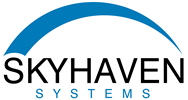Department Of Energy Selects Skyhaven Systems, LLC To Develop An Advanced Photovoltaic Barrier Coating
BOSTON, May 1, 2006 — Skyhaven Systems, LLC (RIL), formerly MicroCell Technologies, was selected by the Department of Energy to develop a new barrier coating for advanced photovoltaic modules. The Department of Energy is interested in improving renewable energy technologies such as photovoltaics to allow them to reach their full potential. A critical need for photovoltaic module packaging is the development of barrier coatings to protect solar cells from water and water vapor. Not only must these coatings be impermeable to water vapor, but they must also be optically transparent, stable at high temperatures, unaffected by UV radiation, chemically resistant, and easy to apply giving a low cost. Furthermore, coating adhesion to commonly used polymeric encapsulants and backsheets, such as ethylene vinyl acetate (EVA) and polyvinylflouride (PVF) must be excellent. It is highly desirable to have one material and application technique that would work for all types of solar cells.
Skyhaven Systems, LLC (RIL) and its partners, Neo-Advent Technologies (NAT) and Madico, are formulating, designing, and fabricating a photovoltaic device barrier coating (PDBC) for use in renewable energy applications. To accomplish this, the team is developing a new technology by synthesizing novel materials and using them in a unique configuration. This technology will enable a photovoltaic module barrier coating that can be applied without the use of physical/chemical vapor deposition (PVD/CVD) processes.
RIL is developing this advanced photovoltaic barrier carrier for both flat plate and thin film photovoltaic systems. RIL is utilizing its material, chemical, and mechanical analysis expertise to a design a system that exhibits exceptional barrier properties while maintaining flexibility and ease of application. NAT is performing the chemical formulation of the barrier coating while Madico is assisting in evaluating the samples and scaling the technology for commercialization.
The outcome of this barrier coating process will provide the government and industry with a coating system that meets or exceeds the performance of presently used coatings and their corresponding pretreatments/primers. The present focus of this technology is toward PV devices/modules although it has a broad scope of applications where outdoor weather protection and barrier coating protection are required. Some of the areas where this technology can be successfully adopted include aircraft, ships, electronics, aerospace, automotive, construction and scratch resistant coatings. Specifically, these markets include food/beverage packaging and barrier technologies for organic light emitting devices.






